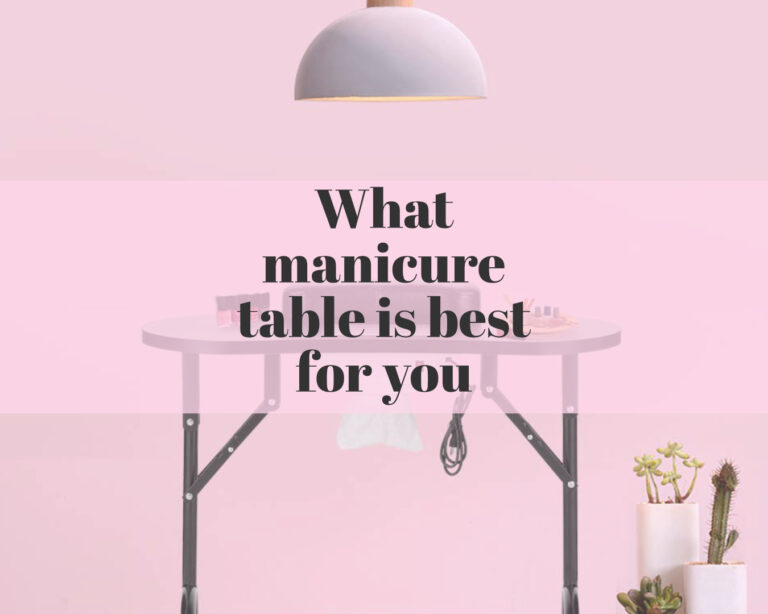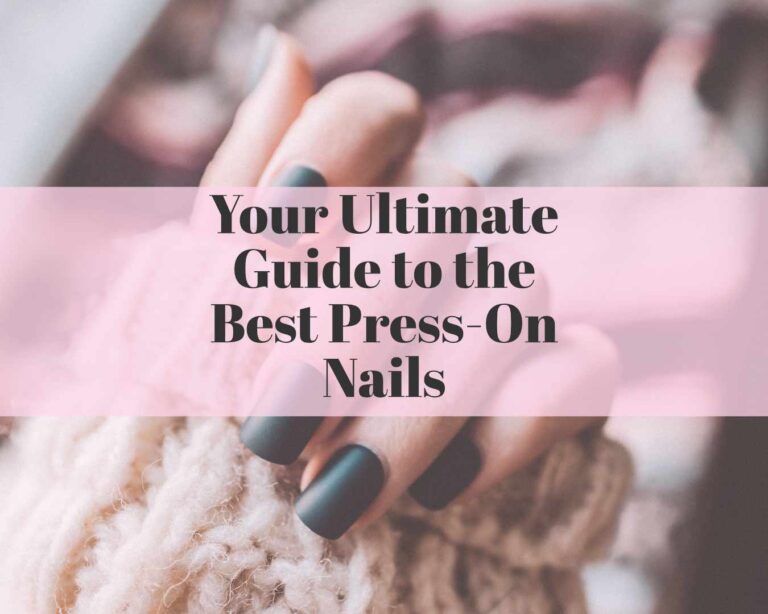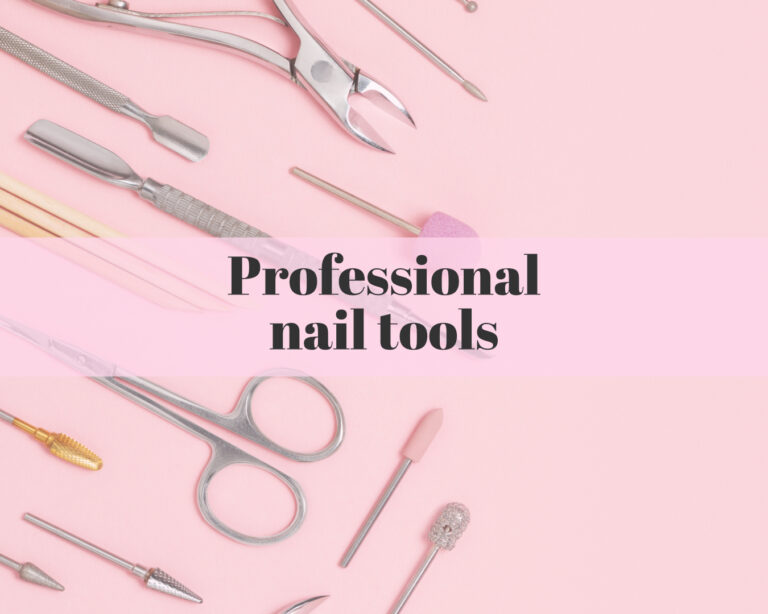
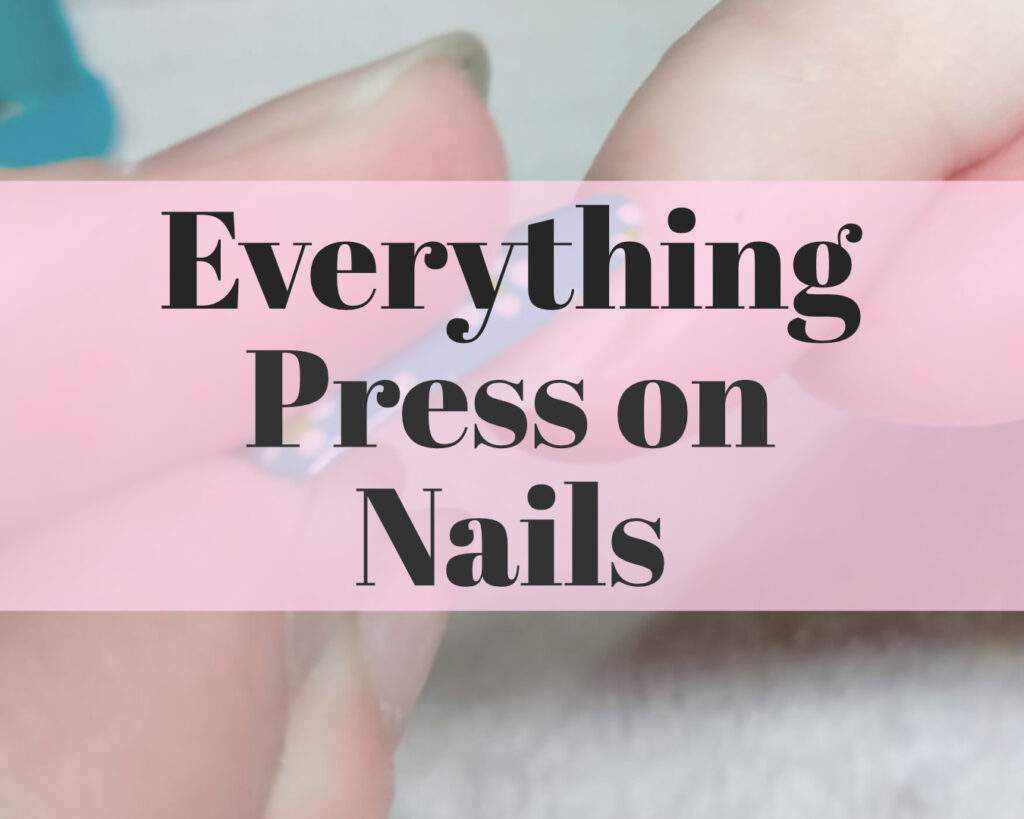
Press-on nails, How, What, When, Where and Why
Let’s talk about press-on nails. This trend has become so popular in the past year, especially now when many nail technicians were not allowed to open their salon doors and to see clients personally. Many people were devastated at the idea that they would have to be without beautiful nails for months on end, without a clear determination of when they would be able to visit a salon again.
Many nail technicians had to make alternative plans to keep clients happy and generate an alternate form of income. In this article, I am going to cover what press-on nails entail and what’s everything you should include in a press-on nail box for your clients, how to create and customise press-on nails, how to properly apply them to the nails and the different ways you can do so, Where you can find and sell press-on nails, when is the best time to sell press-on nails, and why you should consider creating press-on nails as well, and the pros and cons of press-on.
Table of Contents
Pros and Cons of Press on Nails
Press-on nails pros | Press-on nails cons |
|
|
Press-On Nails Sizing Guide

What are press-on nails and how do they work
Press-on nails are full coverage nail tips that are created for home use. They can be reusable and any design or embellishments can be added to them. They are however not as strong and long-lasting as say, acrylic nails. But they can also last a couple of weeks if taken care of correctly. They are usually stuck on to the nails using nail glue or in some cases gel for stronger adhesion. For shorter wear time they can be applied to the nails using double-sided nail glue stickers.
Press-on nails can be decorated using gel polish, nail polish, hard gel or even acrylic. Just note that certain products can affect the flexibility of the nails. For long-lasting and perfect fitting nails, it’s better to use gel polish as harder substances like acrylic tend to “shrink” the nails.
A good thing about press-on nails is that they can be reused when made with quality products and when taken care of properly. This is generally why press-on nails will be decorated with extreme nail art and embellishments and sold for higher prices if nail technicians are requested to make custom sets. The amount of work going into creating a set of press-on nails can take a lot longer than a usual set of nails if extreme designs are requested.
When someone orders a set of press-on nails, a sizing chart will be given to the client. This is used to determine what size tips should be used. After this, the nail tech will choose the right nail sizes and start designing the nails to fit the client’s needs and descriptions.
It is good practice to add a disclaimer which states, that if a client measures their nails wrong no blame befalls on you. This is important as press-on nails can be shipped nationwide, so you won’t be able to measure the clients’ nails yourself. You should also have policies in place to protect you and your client, in case of missing or damaged nails. You have to state how and if you have a return policy as well. By not including all these things there will be nothing protecting your or your clients.
What should you include when selling press-on nails?
When selling press-on nails it is a good idea to include everything that’s needed to apply them in the box. Appearance is very important for creating a lasting impression with your clients. So if the nails are presented in a beautiful box that has been personalised with some added things like a thank you card and care instructions, it will impress your clients. You can purchase a jewelry gift box, or if you want to save money through shipping you can use decorated envelopes or gift bags. For shipping purposes, you will have to make use of mailing envelopes.
You can adhere the nails to the box using clear mounting tape. It is a clear piece of double-sided tape-like product that will hold the nails in place without them falling off. Further, you can add things like an orange wooden cuticle pusher, double-sided nail glue tabs, mini-file and buffer, a small pocket-sized nail glue, sanitiser wipes, a thing of nail dehydration fluid, a sanding band and small cuticle oil to the box (you can simply buy cuticle oil and fill small containers with it to give to your clients).NOTE: add any potential allergens that may be contained in, say the cuticle oil, in case your clients are allergic to some ingredients.
You can also insert a checklist of everything added to the box and descriptions of the items. Add detailed information on how to apply the nails properly and how your clients should take care of their nails to ensure they will last longer and be able to be reused. You can also add images to make explanations easier. Add a thank you card with your social media links and contact information.
How to make and customize press on nails
Some things you’ll need to get started include but are not limited to:
- Nail file
- Full cover tips
- Gel base coat and topcoat (matte and glossy)
- Gel polish
- Gel paint
- Rhinestones and embellishments
- Nail tip stands
- Gel brushes
- UV/LED lamp
To make press on nails you should first find a reputable brand whose products you trust. Buy different shapes and lengths of full cover tips. If you’re only starting with your press-on nails business you will probably have few to no clients. So just start by researching what shapes and lengths of nails are more popular. That way you can create demo sets of nails that will be appealing and gain your business clients.
It is a good idea to invest in good quality full cover tips which are flexible and strong. Don’t try to save money by buying cheap tips. You don’t want complaints coming in about breaking nails. The same goes for gel and any other products you might use. You can’t expect clients to pay the same price that they would have paid for quality products when you use off-brand cheap products.
The steps for creating press-on nails are as follows:

- Choose the correct size tips and file down the little parts of plastic on the front. Feel around the tip to make sure no sharp pieces are sticking out. Remove the shine from the tips by filing them with your hand file. You won’t need to file any more than that as full cover tips are already sized and made according to specific lengths that you can choose from.

- Clean off any dust from the nails using a sanitiser. Don’t use acetone as it will eat through the tips and also smooth out any roughness that you created with your file.

- Stick the nails to your tip stands, and apply two layers of basecoat to each, curing in between each layer. This is not a mandatory step but a base coat will create longer-lasting nails.

- Don’t wipe the tacky layer after curing for the last time. Cover the nails with your desired gel colours and glitters. Remember to cap the free edge of the nails.
- To protect the gel polish you can always add a thin layer of hard gel. Another option is to cover the nails with another layer of base coat after the colour gel has been applied.

- After your desired opacity has been achieved you can start to paint your designs using the gel art brushes and your gel paint.
- If you wish to add things like rhinestones you will have to cover the nails with a top coat first. After curing you will have to file the topcoat to create a matte surface and then stick the rhinestones to the nails using the base gel or nail glue (base gel works better for sticking intricate patterns and I find it lasts longer). If you stick rhinestones directly on to a shiny surface, it won’t last as long.
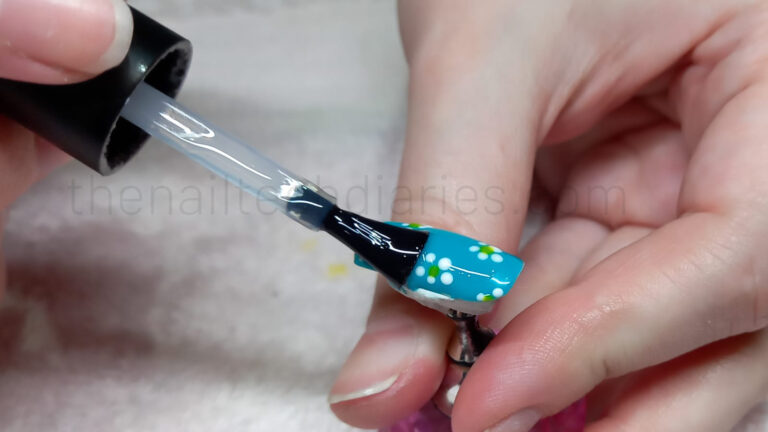
- After the nails are done add your desired top coat and cap the edges. Never cover rhinestones with a top coat as this will dull the shine and ruin the entire look of the rhinestones.

- Once everything has been cured you can remove the nails from the tip stands and feel around the edges for any sharp textures or pieces of gel sticking up. When painting nails using tip stands you might touch the bottom of the nail with the brush causing sharp pieces of gel and an unappealing look underneath the nails. Always take pride in your work.
How to apply press-on nails
There are three ways that I know of to apply press-on nails. You can use nail glue, gel base coat, and double-sided nail glue stickers.
But before you can even think of applying the nails you have to first prepare the nails properly for the application. DO this by doing the following: natural nails.

- Carefully push back your cuticles by using your cuticle pusher. Take heed to not push too hard as this can damage your cuticle area and nail matrix.

- Lightly buff your nails using the nail file, don’t use a nail buffer as this won’t create a rough enough surface for the nails to adhere to.

- Prep the tips by using your e-file or sticking a sanding band to the back of your cuticle pusher and filing the curve where the tip will adhere to your nails. This is a great hack as you won’t be able to properly prepare the tips by using a regular nail file.
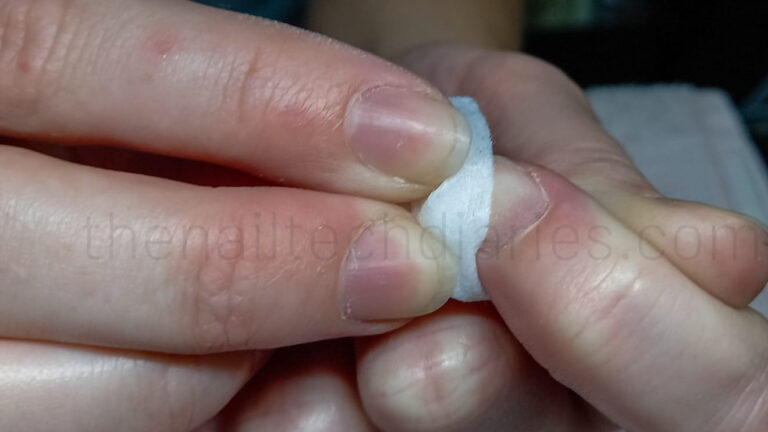
- Clean any dust off the tips and your nails using the sanitized pads. Take heed not to touch your nails or the prepped tip areas again as this will transfer oil to the prepared areas and cause lifting.
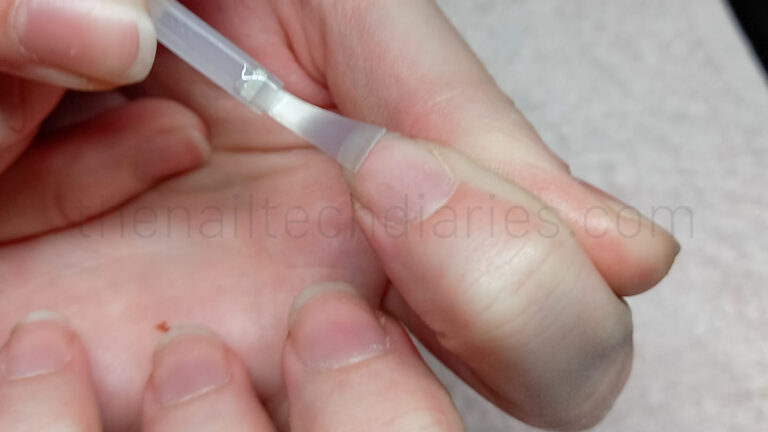
- Dehydrate your nails.
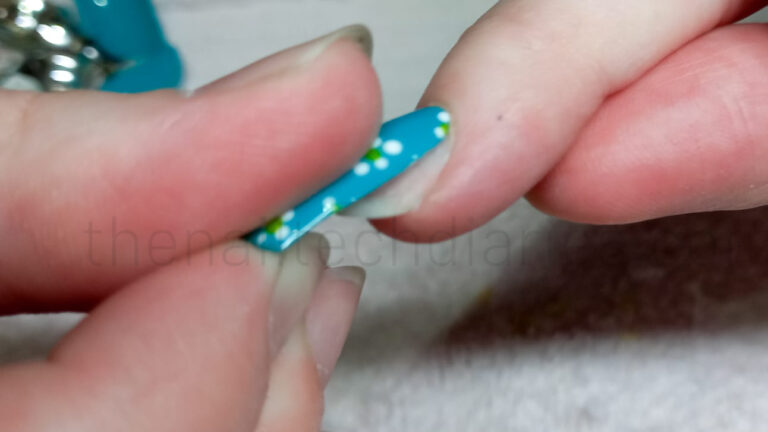
Next, you can apply the nails in one of three ways (using any of these methods you will have to apply the nails at an angle starting from the cuticle and pushing the nails down. Press the nails in the centre and pinch the edges at the sidewalls):
- Glue: Add some glue to the tip and press them to the natural nail. Don’t add too much glue as this will flood the cuticles and sidewalls and also cause lifting. Add pressure to the nails to ensure that any trapped air bubbles are released. Press it down for at least 30 seconds depending on the temperature to ensure optimum adhesion to the natural nail. If the temperature is a bit colder you would have to hold the nails in place for longer as colder weather will prolong the time it will take for the glue to dry. Be careful to not get any glue on your skin as it can cause irritation and result in you accidentally glueing your skin to a surface.
It is also very important to keep your hands out of water for at least a couple of hours as water will cause the glue to lose its adhesion faster.
- Gel: It is recommended that only trained professionals make use of this method. It is generally applied the same way as you would with glue. The biggest difference is that you need to hold it in place while it is cured under a lamp. If the gel starts warming up it has to be removed from under the lamp until it has cooled and then put under the lamp again.
Press-on nails will not be able to be reused when using gel for adhesion.
- Double-sided glue tacks: Place the sticky side to your nail and press it onto the nail thoroughly. Then remove the protective plastic covering from the other sticky side and press the tips to your nails. This product will cause the nails to last for the shortest amount of time but is also the easiest to remove and will cause less damage to the tips and your n
How to care for your press-on nails
It is very important to care for the press-on nails for them to last long, be reusable and protect your natural nails from damage. Things you shouldn’t do include but are not limited to:
- Biting your nail extensions
- Picking at your nails
- Working and water and with chemicals without wearing gloves
- Using your nails as tools
If something happens and your topcoat chips it is important to apply a new layer topcoat and seal the nails as a top coat not only creates a beautiful, eye-pleasing finish but also creates a protective barrier on the nails.
If lifting occurs it is better to remove the nail and re-apply it than to try and add some glue to stick it back on. This is because if a piece is starting to lift, the rest of the nail is sure to follow. Once the nail lifts and water gets under the tip, it creates the perfect environment for bacterial growth. If you only add glue and stick the nail back on, you won’t be able to prevent bacteria from growing.
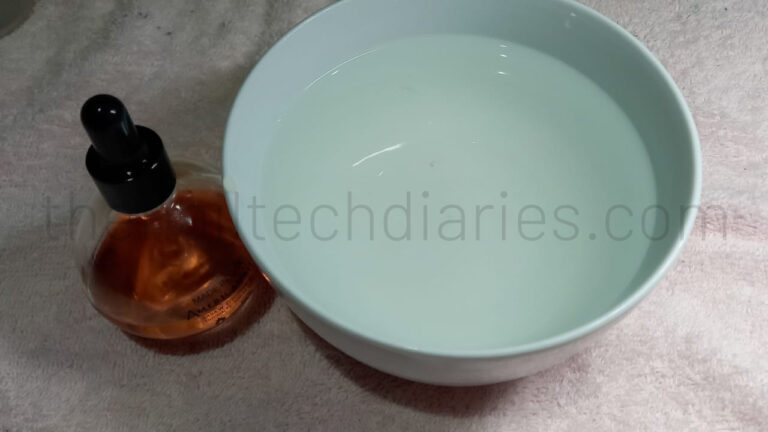
How to remove press-on nails
For press-on nails to be reusable they should be properly cared for when worn, removed and after removal. If you don’t remove press-on nails correctly you can risk seriously damaging your natural nails.
- Firstly the fastest way you can remove press-on nails is by using pure acetone. This method will however ruin the press-on nails and you won’t be able to use them again after removing them.
To use this method all you’ll need is a bowl with some pure acetone (specifically designed for nail use) don’t use industrial brand acetone, it’s not the same and you’ll risk burning your skin. Soak the nails in acetone for a couple of minutes. You can gently pry the nails to feel if they’re loosening up. Don’t force it to come off and don’t pull or peel them as you’ll risk damaging your natural nails. Removing press-on nails should never feel uncomfortable.
To speed up the process you can put the bowl over another bowl filled with warm water. Warm water will heat the acetone and loosen up the glue faster. After the nails have been removed, gently buff your natural nails to remove any excess glue. Clean them with sanitiser or simply wash your hands. It is important to moisturise after using acetone, so place some cuticle oil on and under your nails and rub your hands with lotion.
- Use soapy water. This method, when done correctly will allow you to reuse the press-on nails after removal. DIsh soap tends to break down the glue so if you simply wash dishes without wearing gloves your nails will likely just pop off. Soak your hands in warm soapy water for a couple of minutes. Just like when using acetone you can gently pry the nails to see if they’re loosening up but never force them.
Once all of the nails are off, wash your hands and apply cuticle oil on and underneath your nails. You can also apply moisturiser to your hands as dish soap tends to dry out ones’ skin.
Dry off the nails and file off any remaining glue using your orange cuticle stick and a sanding band. Clean the nails with some sanitiser and store them in a suitable container for future use.
- Use cuticle oil to gently remove the press-on nails. This method will preserve the press-on nails for future use and will moisturise your natural nails in the process. Add some cuticle oil around your nails and underneath your nails. Then add some warm water to a bowl and add an oil like coconut oil, more cuticle oil, olive oil or even body wash with an extreme oil treatment.
Soak your hands in the mixture for a couple of minutes and then gently pry the nails to see if any lifting occurs. Don’t force the nails. As you remove the nails you should feel moisture underneath the extensions. This means they’re being removed correctly and without force as the water and oil are getting under the press-on nail and doing their job.
Once the nails are removed you can gently rinse them off to remove any excess oil and then file the back of the nails lightly to remove any excess glue. Store them in a safe place for future use.
You must pry the nails from the back and the sides to check for lifting. Never press the nails at the tip as this can cause your natural nail to be damaged as it will force the press-on nail to lift. Your natural nails should not be damaged after removing the press-on nails.

How long do press-on nails last
Press on nails applied with glue can generally last for up to two weeks. This time frame can change to longer or shorter depending on how you care for the nails and how the nails were applied.
Press-on nails applied with gel will last longer than those applied with glue. The adhesive is a lot stronger and it’s not as sensitive to water and oils as glue.
Press-on nails applied using double-sided glue tacks will last a couple of days at most as it’s designed for short wear periods only.
Where you can buy press-on nails
Where you can sell press-on nails
Press-on nails can be found at most nail stores and health and beauty retailers. Many technicians make and sell press-on nails online. If you wish to create and sell your press-on nails you can look at stores like Etsy.
You can also create your e-commerce website but that will take time and money. Using a platform that’s already been at it for years and that people trust and use is a better option for getting paying clients fast. Online platforms like these also usually have protocols in place to protect the client and the owner of the business.
You can also sell the nails on social media platforms like Facebook. Facebook has many options for its users, making buying and selling goods very easy like Facebook marketplace and various buying and selling groups. You can also create a business page on Facebook and sell them this way.
When’s the best time to sell press-on nails
Any time is the best time. In short, many people prefer to get their nails done professionally at a salon, but just the same many people prefer the convenience and cost-effectiveness of using press-on nails. During the Lockdown period, many people had to resort to buying press on nails. There are still many people who are wary of visiting salons during this time as they fear infections.
If you are passionate about something and are willing to put in time and effort into not only making the nails but also advertising your creations, you will always get clients. The fact of the matter is that just like with any business it takes hard work and dedication. You probably won’t achieve success straight away but if you sell good quality products you will gain the trust of your consumers and in time your business will start growing.
Why should you consider making and selling press-on nails
The short answer to this question is that it’s always a good idea to have multiple streams of income. Nothing in this life is sure and anything can happen. No matter how good things might seem everything can change in the blink of an eye. We saw that clearly with the Covid-19 outbreak. It’s a scary thought but you should always be prepared for the worst.
Online businesses are also taking the world by storm because you can work in the comfort of your own home and at your own pace. If you can’t afford to start your nail salon this is also a great starting block to get your talents and work out there.
Press-on nails are also a great way to practice and show off your skills. If all of your clients choose to do plain nails with relative minimal nail art, no one will know if you have a talent for hand painting or creating intricate rhinestone patterns because you won’t get the exposure. By doing extreme art on these nails people will recognise your talent and be drawn to you. I can speak from experience that after I started advertising my art on press-on nails I got a lot more clients who are interested in doing daring nails.
Do press-on nails damage your natural nails?
No, press-on nails should not damage your nails. It depends on the way that you prepared your nails before application, how you took care of the nails, and finally how the nails were removed to determine if your natural nails will be damaged.
If you overfilled your nails and added too much glue during application your nails will not be the same after removal. If you don’t take care of the nails and use them as tools and work with chemicals and too much water, the nails can rip off and damage your natural nails. If you pull off the press-on nails and don’t spend time removing them properly your natural nails will be damaged.
Conclusion
In conclusion, press-on nails can be a lucrative business to invest in for a nail tech. It’s also a great way to keep your own nails looking great when busy with clients, as everyone knows when you’re a nail technician you rarely have time to do your own nails





